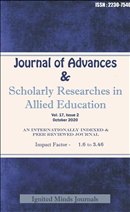A study of image processing approach for Brain Tumor Detection
Exploring the Challenges and Techniques in Medical Image Processing for Brain Tumor Detection
Keywords:
image processing, brain tumor detection, anatomical features, MRI, CT scans, PET, radiotherapy, medical imaging, noise, intensity valuesAbstract
The aim of this study is to It is now possible to derive precise anatomical features of the brainfrom clinical information utilising MRI or CT scans, which have revolutionised the medical imagingsector (CT). Beyond these procedures, PET makes use of noninvasive techniques to glean usefuldetails regarding a patient's health and function. Additionally, it aids in the planning of surgeries,radiation treatments and the navigation of intraoperative procedures. The use of radiotherapy as anexample illustrates this point, as it delivers a precise dose of radiation to the tumour while minimisingcollateral harm to healthy muscle. Imaging processes are designed to provide evidence regarding aspecific location in the image. The tissue is penetrated by the X-ray CT by the application of photonattenuation. When using MRI, it is possible to figure out how dense water really is. The subject'sanatomy can be seen clearly in MRI and CT scan images, and the varying density of tissues in differentparts of the body can be identified in this way. Medical imaging poses a particularly complex set ofissues when attempting to make sense of the data because of the large variety of individual variances.Another important factor when performing medical image processing is the presence of noise due tonoise measurement, modality artefacts, and fluctuations in the intrinsic intensity of the region ofinterest. As a result, medical image processing employs a variety of techniques to eliminate noise andenhance images in the most effective way possible. The type of noise and its intensity are criticalconsiderations because there are so many different imaging systems that rely on a wide range ofmeasurement instruments. In addition, noise effects may vary greatly in different regions of interest,creating in further difficulties in their discernment, which often computes variance across intensityvalues rather than intensity values.Downloads
Download data is not yet available.
Published
2020-10-01
Issue
Section
Articles
How to Cite
[1]
“A study of image processing approach for Brain Tumor Detection: Exploring the Challenges and Techniques in Medical Image Processing for Brain Tumor Detection”, JASRAE, vol. 17, no. 2, pp. 741–746, Oct. 2020, Accessed: Jan. 10, 2026. [Online]. Available: https://ignited.in/index.php/jasrae/article/view/12822











